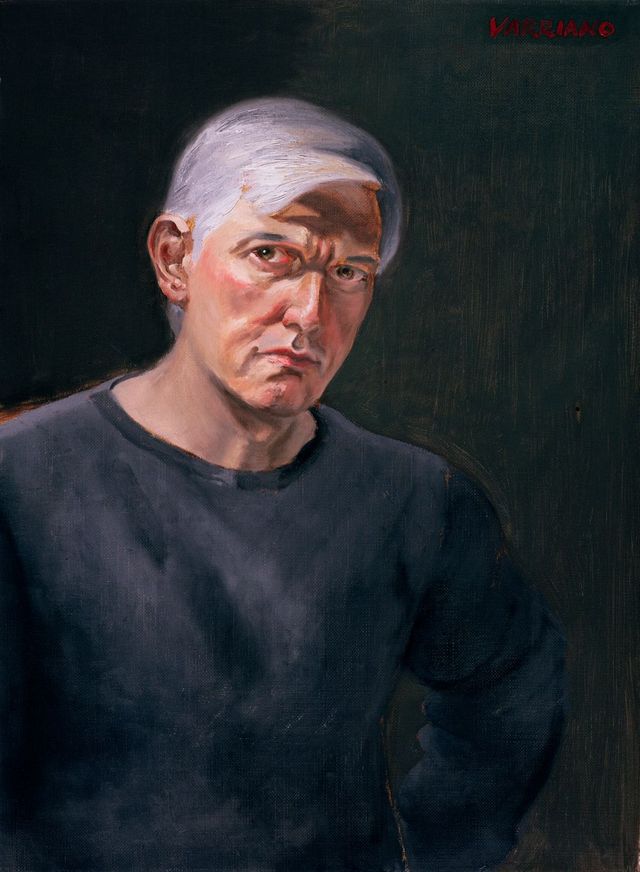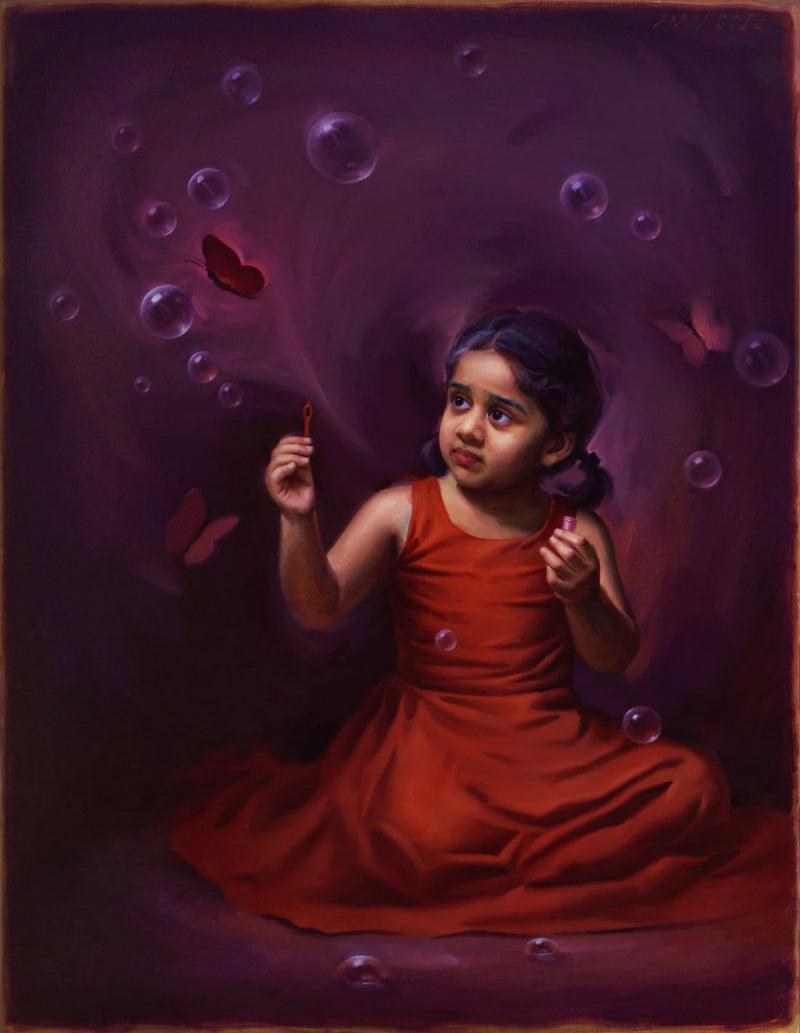Unveiling the Keys Behind Expressive Figurative Oil Painting Styles
Wiki Article
The Evolution of Figurative Oil Paint: Comprehending Its Historic Value and Modern Interpretations
The development of metaphorical oil paint serves as a compelling lens where to examine the interplay in between imaginative expression and historical context. From the meticulous naturalism of the Renaissance to the stirring power of the Baroque, each age has actually contributed layers of definition and technique to this classic tool. Contemporary musicians, attracting from this rich heritage, are now reinterpreting the human figure in manner ins which test standard narratives. As we discover these makeovers, one need to consider just how the dialogue in between present and previous informs not just creative technique however likewise societal reflections in a significantly complicated globe.Beginnings of Figurative Oil Painting
The beginnings of metaphorical oil paint can be traced back to the very early Renaissance in Europe, specifically in the 15th century. The development of oil paint enabled for better deepness of color and detail, improving the realistic look and vibrancy of their work.
In this transformative period, numbers were usually shown within contextually abundant atmospheres, showcasing not only their physical characteristics however also their mental states. Leaders such as Jan van Eyck and Titian harnessed the tool's convenience, using layering strategies to accomplish luminosity and texture. This innovation promoted the representation of elaborate fabrics and the nuances of complexion, adding to the growth of portrait and narrative scenes.
Moreover, the Renaissance emphasis on humanism cultivated an admiration for uniqueness, which consequently influenced musicians to produce more relatable and vibrant figures - figurative oil painting. As an outcome, metaphorical oil paint became an effective automobile for storytelling and emotional involvement, preparing for future creative movements and designs
Key Historic Motions
Significant historic movements have actually formed the evolution of metaphorical oil painting, each contributing one-of-a-kind approaches and techniques that increased the tool's possibilities. The Renaissance noted a critical minute, highlighting realism and the human form, with musicians like Leonardo da Vinci and Michelangelo pushing the boundaries of physiological precision and perspective. Following this, the Baroque period brought remarkable contrasts of light and darkness, exhibited by Caravaggio, who instilled religious motifs with intense emotionality.The 19th century presented Romanticism and Realism, where musicians such as Delacroix and Courbet challenged classical suitables, concentrating on individual expression and daily life. The development of Impressionism further reinvented the tool by emphasizing the results of light and shade, causing a departure from standard depiction.
In the early 20th century, motions like Expressionism and Cubism redefined metaphorical painting through abstraction and the exploration of psychological depth. Each of these motions not just mirrored the social changes of their times however likewise prepared for modern interpretations. The interplay between these historic activities has produced a rich tapestry of designs and ideologies, affecting contemporary artists in their quest of catching the human experience on canvas.
Techniques and Materials Development

Throughout the Baroque duration, techniques such as chiaroscuro and sfumato arised, improving the psychological vibration of figurative make-ups. Musicians began to trying out glazes and impasto, manipulating appearance and luminosity. By the 19th century, innovations like the usage of pre-mixed paints in tubes transformed accessibility, permitting artists to repaint en plein air and catch the short lived impacts of light.
The 20th century witnessed the intro of artificial pigments and mediums, which increased the combination and modified the consistency of oil paints. over here In addition, the exploration of brand-new application methods, such as palette knives and brushes of varying tightness, further diversified creative expression. Collectively, these improvements reflect the progressing partnership between materials, methods, and the imaginative vision inherent in figurative oil paint.

Contemporary Interpretations
Contemporary interpretations of figurative oil painting reflect a dynamic dialogue between custom and advancement, where musicians test developed standards and discover varied motifs. This advancement my review here shows up in numerous means, as modern musicians mix timeless strategies with modern-day principles, usually addressing social, political, and individual stories.Several experts attract ideas from historical works, yet they infuse their pieces with modern viewpoints, making use of the human kind as an automobile for discourse on identification, society, and sex. Artists significantly trying out abstraction, distortion, and multimedias, which permits a broader analysis of the number and its context.
Furthermore, the use of vivid shade schemes and non-traditional structures typically offers to interrupt traditional viewing experiences, prompting crucial engagement from target markets. This change in emphasis prolongs beyond appearances; it shows an expanding awareness of the complexities of human experience in an interconnected world.
As figurative oil painting proceeds to progress, it remains an essential medium for discovering the nuances of modern life, symbolizing both a regard for heritage and a commitment to dynamic thought. The outcome is an abundant tapestry of expression that resonates with the intricacies of the modern human problem.
Influence On Modern Art
The influence of figurative oil paint on modern-day art is profound, as it has continuously motivated a myriad of artistic motions and methods throughout the 21st and 20th centuries. From Expressionism to Surrealism and beyond, the expedition of the human number has actually remained a central style, enabling musicians to share complex emotions and narratives. This emphasis on metaphorical depiction has actually brought about a re-examination of conventional methods, leading to cutting-edge strategies that mix realism with abstraction.
Moreover, contemporary artists have accepted metaphorical oil paint as a method to resolve social and political issues, using the tool to test assumptions of culture, identity, and gender. The revival of rate of interest in figurative operate in current years shows a hoping for link in a significantly digital world, where human experience and emotion are critical.
Furthermore, the dialogue between metaphorical oil paint and contemporary art appears in the jobs of musicians such as Kehinde Wiley and Jenny Saville, that make use of historic referrals while instilling their items with contemporary significance. Eventually, metaphorical oil paint remains to form and redefine contemporary creative expression, highlighting its enduring importance in the art world.
Verdict
The advancement of metaphorical oil paint emphasizes its historic relevance and flexibility throughout different creative motions. From the naturalism of the Renaissance to the emotive expressions of the Baroque and the innovative strategies of modernity, this Continue tool has continually changed. Contemporary analyses show dynamic colors and unconventional compositions, cultivating crucial interaction with social and political themes. Inevitably, metaphorical oil painting stays a vital tool for exploring the human experience, reverberating exceptionally in today's digital landscape.The evolution of figurative oil painting offers as a compelling lens through which to examine the interaction between imaginative expression and historic context.Significant historic movements have actually shaped the advancement of figurative oil paint, each contributing one-of-a-kind viewpoints and strategies that expanded the tool's opportunities.As historical motions formed the trajectory of metaphorical oil painting, the materials and strategies employed by artists have actually additionally undergone considerable makeovers. figurative oil painting.The impact of figurative oil painting on modern art is profound, as it has actually consistently motivated a myriad of imaginative movements and practices throughout the 20th and 21st centuries.The development of figurative oil paint underscores its historical significance and versatility throughout various artistic activities
Report this wiki page